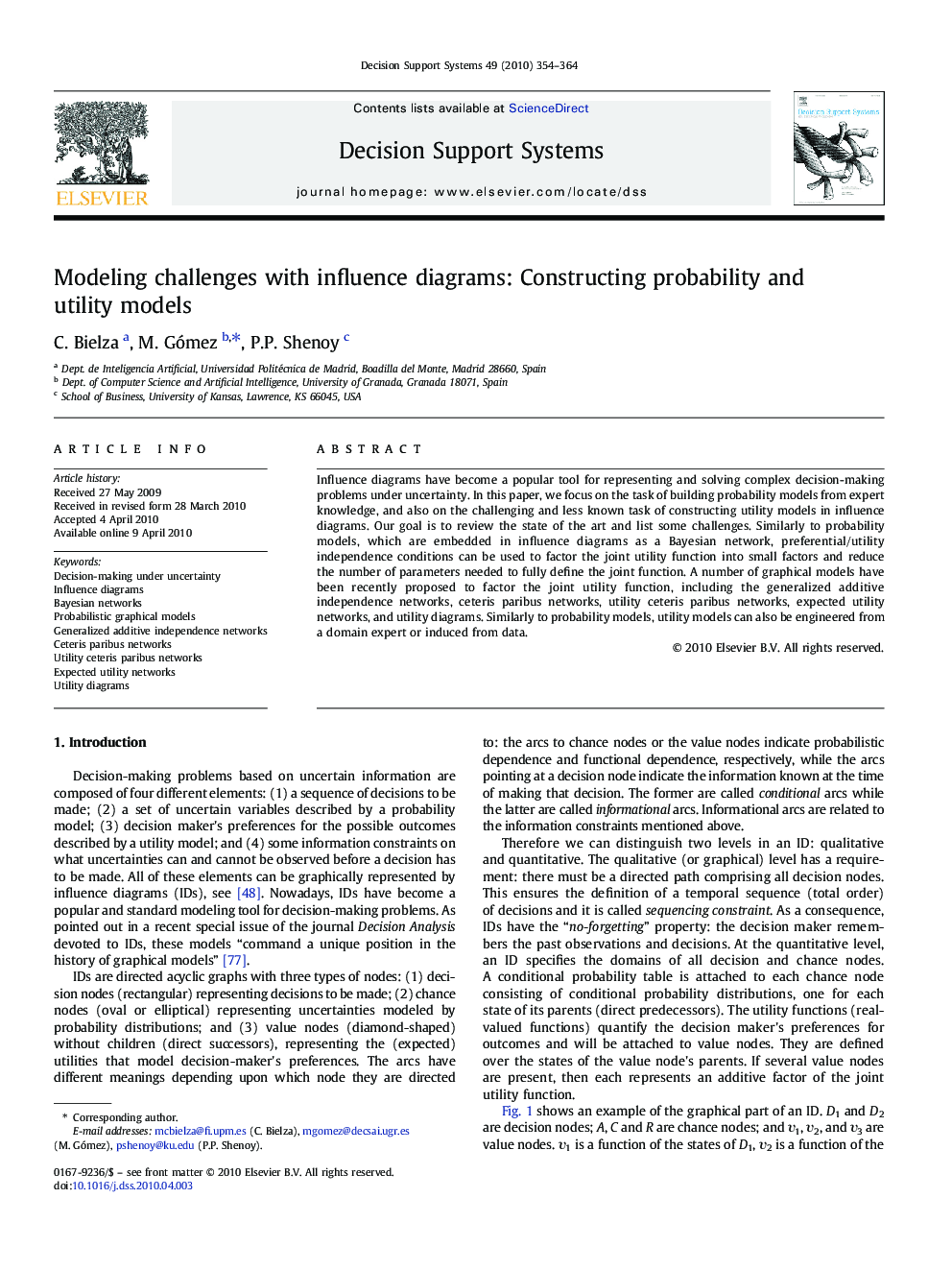| Article ID | Journal | Published Year | Pages | File Type |
|---|---|---|---|---|
| 554794 | Decision Support Systems | 2010 | 11 Pages |
Influence diagrams have become a popular tool for representing and solving complex decision-making problems under uncertainty. In this paper, we focus on the task of building probability models from expert knowledge, and also on the challenging and less known task of constructing utility models in influence diagrams. Our goal is to review the state of the art and list some challenges. Similarly to probability models, which are embedded in influence diagrams as a Bayesian network, preferential/utility independence conditions can be used to factor the joint utility function into small factors and reduce the number of parameters needed to fully define the joint function. A number of graphical models have been recently proposed to factor the joint utility function, including the generalized additive independence networks, ceteris paribus networks, utility ceteris paribus networks, expected utility networks, and utility diagrams. Similarly to probability models, utility models can also be engineered from a domain expert or induced from data.
